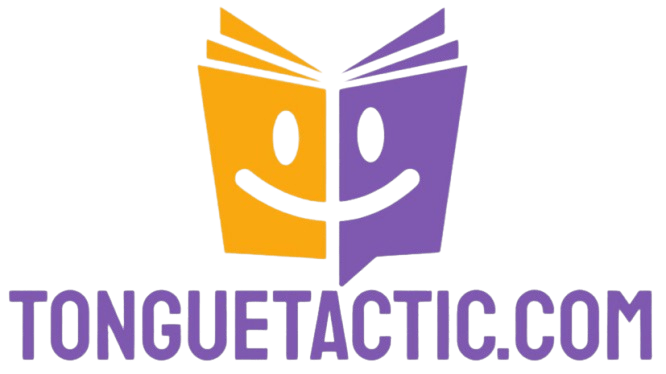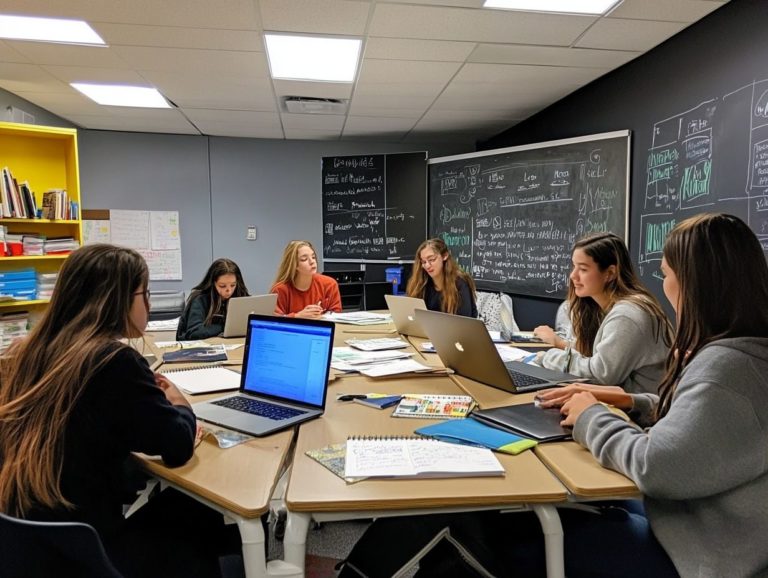10 crucial factors in effective language course design
Designing an effective language course requires a careful mix of strategy and creativity. You ll discover ten crucial factors that can significantly elevate language learning.
From identifying your target audience to integrating technology and real-world applications, each element helps create a curriculum that captures and inspires learners. Dive in to explore these essential components for successful language course design.
Contents
- Key Takeaways:
- 1. Identifying the Target Audience
- 2. Setting Clear Goals and Objectives
- 3. Choosing the Appropriate Teaching Methodology
- 4. Incorporating Interactive and Engaging Activities
- 5. Creating a Structured Curriculum
- 6. Balancing Theory and Practice
- 7. Providing Adequate Resources and Materials
- 8. Incorporating Multicultural and Multilingual Perspectives
- 9. Incorporating Technology and Online Learning
- 10. Incorporando Aplicaciones del Mundo Real
- How to Assess and Measure Progress in Language Learning?
- Preguntas Frecuentes
- 1. Cu les son los 10 factores cruciales a considerar al dise ar un curso de idiomas efectivo?
- 2. Qu tan importante es establecer objetivos de aprendizaje claros y medibles en el dise o de un curso de idiomas?
- 3. Por qu es importante entender al p blico objetivo en el dise o de un curso de idiomas?
- 4. C mo puede incorporar una variedad de actividades y tareas mejorar la efectividad de un curso de idiomas?
- 5. Por qu es importante evaluar y valorar el progreso regularmente en un curso de idiomas?
- 6. C mo contribuye ser flexible y adaptable en el dise o del curso a su efectividad?
Key Takeaways:
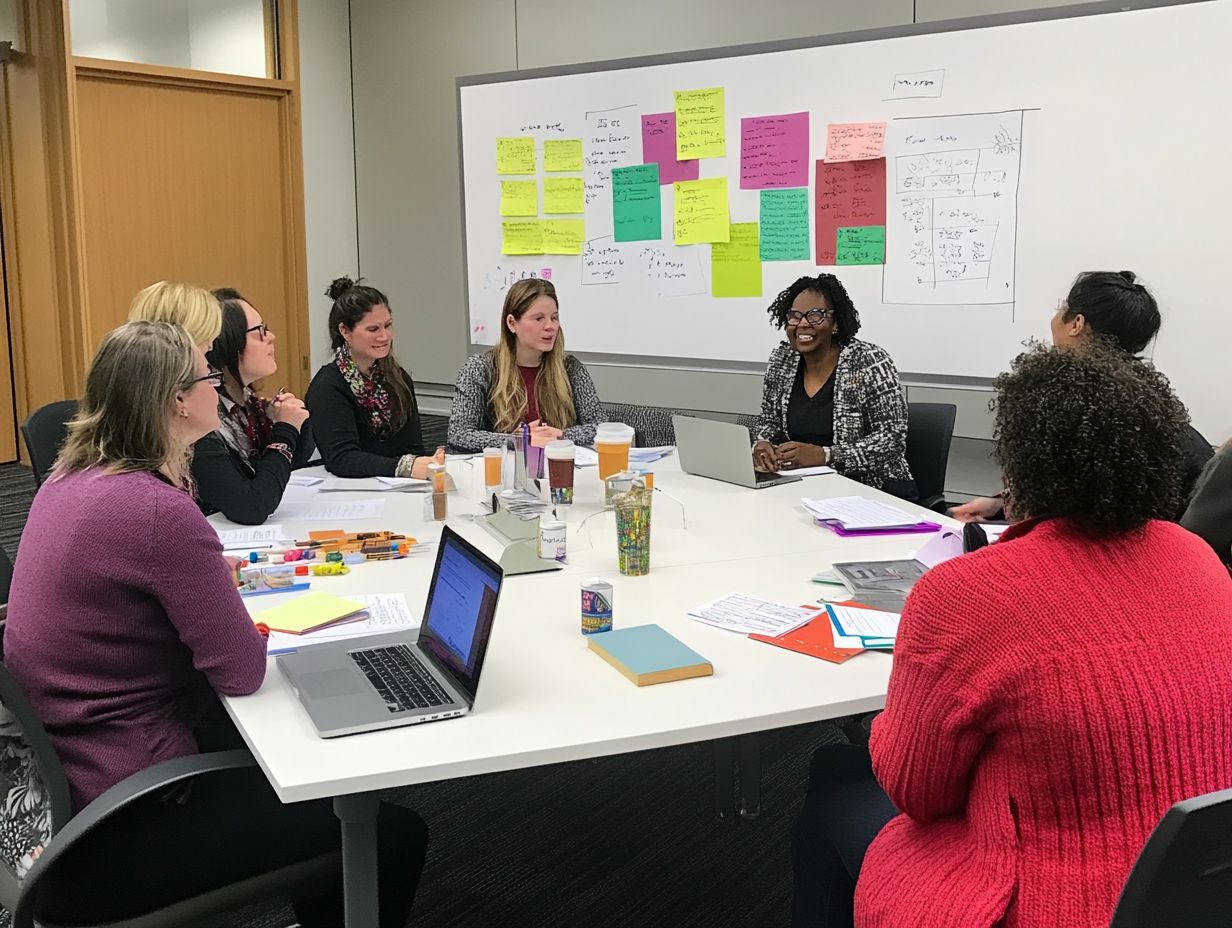
- Identifying your target audience allows for tailored teaching methods.
- Setting clear goals helps guide the course and aligns expectations.
- Select a teaching methodology based on your audience and goals.
1. Identifying the Target Audience
Identifying your target audience is a key step in creating effective teaching strategies. Understanding the specific needs and characteristics of motivated learners shapes your language curriculum.
Consider factors like student personality, their language exposure, and their home environment. For example, younger children thrive in interactive, play-based settings, while adolescents often prefer structured methods that promote independence.
Adults may focus on mastering conversational skills for work or cultural integration. By recognizing these age-related preferences, you can create engaging learning experiences tailored to each group.
2. Setting Clear Goals and Objectives
Setting clear goals is essential for your language learning journey. It influences how you acquire a new language and helps you develop strategies that suit your learning style.
Craft SMART goals specific, measurable, achievable, relevant, and time-bound. This gives you a structured roadmap with milestones to celebrate along the way.
3. Choosing the Appropriate Teaching Methodology
Selecting the right teaching methodology is crucial for effective language learning. Different methods cater to various preferences and goals, enhancing engagement and retention.
For example, communicative language teaching encourages authentic interaction, allowing students to practice real-life conversations. Task-based learning focuses on meaningful tasks using language for specific outcomes, promoting vocabulary acquisition and critical thinking.
Immersion techniques place you in practical contexts, speeding up understanding and deepening cultural connections. Varying these approaches can address unique learning goals and create a dynamic classroom environment.
4. Incorporating Interactive and Engaging Activities
Interactive activities boost your engagement in language learning. They cultivate a supportive environment where you feel encouraged to participate and practice your skills.
Consider these fun methods:
- Games that ignite your creativity
- Group discussions that sharpen your communication
- Role-plays that mirror real-life situations
These activities promote collaboration among your peers and provide you the freedom to express yourself, making the entire process enjoyable.
Consistent and positive feedback plays a vital role in this learning experience. It reinforces your efforts and boosts your confidence. When you feel recognized, you’re more inclined to take risks and embrace challenges, ultimately enriching your overall learning experience and deepening your understanding of the language.
5. Creating a Structured Curriculum
Creating a structured curriculum is essential in language learning. It ensures that your journey is systematic and effectively addresses the unique influences of age and culture that shape language acquisition.
To achieve this, you should thoughtfully integrate basic ideas with practical applications. This approach allows you to engage actively with the language. By weaving in cultural elements, the curriculum becomes more relatable and enriches your learning experience.
Designing adaptable modules that cater to varying age groups encourages inclusivity. This way, you can benefit from the lessons no matter your developmental stage.
Ultimately, this approach underscores the importance of employing effective teaching practices that resonate with the diverse backgrounds and experiences of learners like you.
6. Balancing Theory and Practice
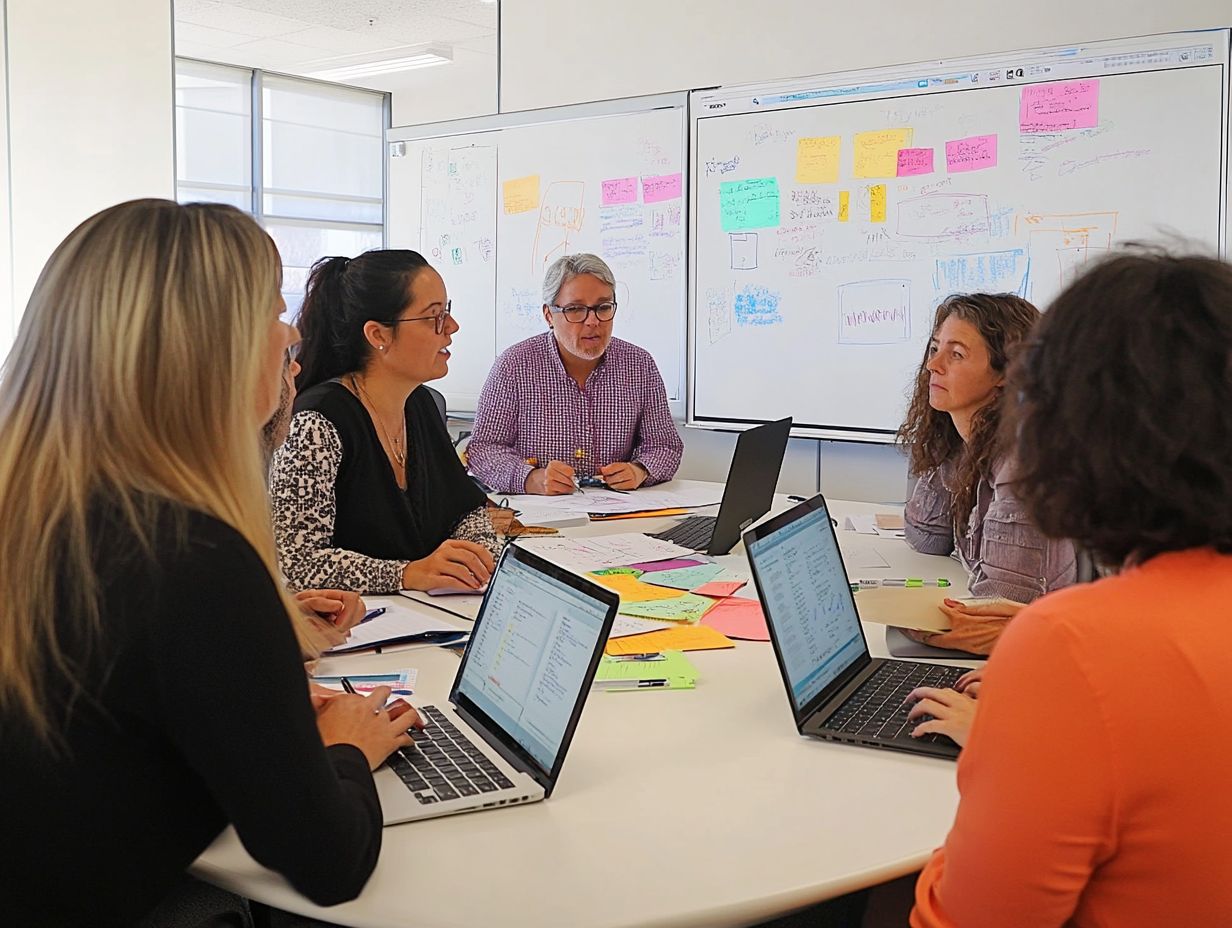
Balancing theory and practice in language education is essential for developing your thinking skills and language comprehension needed for effective communication in real-world contexts. This integration boosts your understanding and makes learning fun!
For instance, engaging in project-based learning allows you to immerse yourself in authentic tasks, like creating a community newsletter or organizing cultural events. Here, you ll need to apply theoretical knowledge in practical settings. Analyzing case studies or role-playing real-life scenarios fosters deeper insights and promotes collaborative learning.
By merging academic concepts with hands-on experiences, you create a dynamic learning environment that transcends traditional paradigms and prepares you for diverse communicative challenges.
7. Providing Adequate Resources and Materials
Providing adequate resources and materials is crucial in your language learning journey. They enrich your exposure to the language and enhance the instructional strategies employed in the classroom.
To cultivate a supportive home learning environment, utilize diverse resources, like textbooks that offer structured grammar exercises to build your foundational knowledge.
Digital materials think language-learning apps and interactive websites are perfect for the tech-savvy learner, making practice not just effective but also engaging.
Incorporating multimedia content like podcasts or films can elevate your experience, especially if you re an auditory or visual learner.
Together, these varied forms of content accommodate different learning styles. With the right resources, your language skills will soar!
8. Incorporating Multicultural and Multilingual Perspectives
Incorporating multicultural and multilingual perspectives into your language learning journey significantly enriches your linguistic knowledge.
It fosters a more inclusive environment that values diversity in learning foreign languages.
By acknowledging the unique contributions of various cultures, you can create a curriculum that goes beyond mere language instruction.
This curriculum can highlight the traditions, histories, and values intricately woven into those languages.
For example, introducing local folk tales or songs from diverse cultural backgrounds can ignite your interest.
These stories encourage you to appreciate the nuances of language within its social context.
Inviting guest speakers from different backgrounds offers firsthand experiences that deepen your understanding and empathy.
These practices not only enhance your language proficiency but also promote meaningful cross-cultural dialogue.
They prepare you for a globalized world where cultural competence is essential.
9. Incorporating Technology and Online Learning
Incorporating technology and online learning into your language education will transform your learning experience today!
With a plethora of interactive tools and resources at your fingertips, you help create better lessons.
By leveraging diverse eLearning platforms, you can craft a dynamic and engaging environment tailored specifically to your needs.
These platforms often boast user-friendly interfaces, making navigation intuitive and enjoyable.
Engaging multimedia content think videos, quizzes, and gamified lessons invites you to immerse yourself in the language.
This immersion enhances both retention and practical application.
The flexibility to access lessons anytime and anywhere enables you to progress at your own pace.
This fosters increased motivation and sustained interest in your journey of language acquisition.
10. Incorporando Aplicaciones del Mundo Real
Incorporating real-world applications into your language learning journey allows you to recognize the significance of your studies.
This recognition enhances your communication skills and enriches your overall learning experience.
Engaging in practical exercises, such as role-playing everyday scenarios like ordering food at a restaurant, enables you to practice in a meaningful context.
Projects that involve crafting a dialogue or skit around themes like cultural festivals or travel experiences can deepen your understanding.
These projects boost your fluency as well.
Consider organizing a small event that invites native speakers, giving you an invaluable opportunity for authentic interactions.
This exciting approach connects classroom learning with real-life experiences, making your language journey all the more rewarding.
How to Assess and Measure Progress in Language Learning?
Assessing and measuring your progress in language learning is crucial for understanding how effective teaching strategies are.
This awareness allows for timely adjustments that can enhance your improvement.
By implementing a mix of assessment methods both formative and summative you gain valuable insights into your comprehension and engagement.
Formative assessments, such as quizzes and peer reviews, provide real-time feedback.
This feedback enables you and your educators to pinpoint areas needing attention as you navigate your learning path.
On the flip side, summative assessments, like final projects or standardized tests, evaluate the cumulative knowledge and skills you’ve developed.
Together, these approaches underscore the importance of feedback in cultivating a responsive learning environment.
Ultimately, this fosters your growth and boosts your confidence in using the language.
What Are the Common Challenges in Language Course Design?
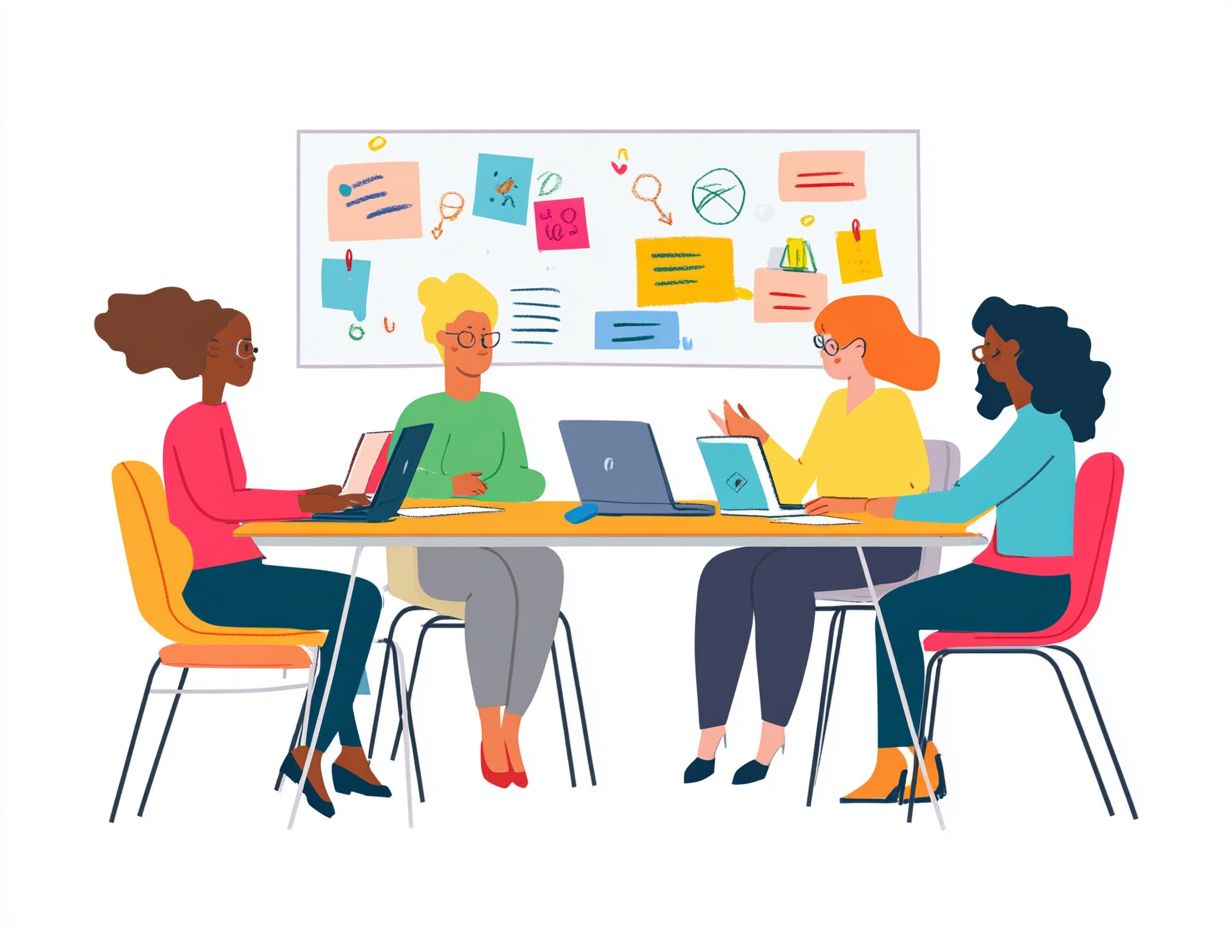
Common challenges in language course design often stem from the diverse personalities of students and the impact of age. To address these issues, it’s helpful to consider 5 essential tips for choosing language courses, as the necessity for effective teaching strategies that cater to various learning styles can also impede the overall effectiveness of the curriculum.
It’s exciting to adapt courses to meet everyone’s needs! For instance, aligning your curriculum with students’ interests can greatly enhance engagement and foster a more interactive atmosphere. Utilizing technology, like interactive platforms and mobile applications, can help overcome limitations related to resource availability and enable a more dynamic approach to learning.
Prioritizing these adaptations can help you create a more cohesive and effective language course for quick learning that truly resonates with every student.
How Can a Language Course Be Adapted for Different Learning Styles?
Adapting a language course to cater to different learning styles is essential for ensuring students feel comfortable and engaged. This ultimately maximizes the effectiveness of the teaching strategies used in the classroom.
Recognizing that students absorb information in unique ways whether they lean toward visual aids, thrive on auditory input, or prefer hands-on experiences allows educators to tailor their methods to meet diverse needs.
For instance, incorporating vibrant infographics and videos can significantly enhance the experience for visual learners. Engaging in group discussions or listening to podcasts can elevate the learning journey for those who excel with auditory input. If a student is a kinesthetic learner, interactive activities such as role-playing or language games might resonate particularly well.
By employing these varied instructional strategies, educators can foster a more inclusive environment, nurturing a deeper understanding and a lasting interest in the language being studied.
What Are the Key Elements of a Successful Language Course?
The key elements of a successful language course include effective teaching methodologies and techniques for engaging learners. Understanding the science behind effective language courses and providing ample opportunities for language exposure all combine to create a comprehensive language acquisition experience.
Beyond these essential components, well-crafted curriculum design is crucial for ensuring lessons are thoughtfully structured. This helps build on prior knowledge while introducing new linguistic concepts.
Varied assessment methods enable educators to gauge learner progress effectively. This allows for necessary adaptations to the teaching approach. The availability of resources, including multimedia tools and authentic materials, enriches the learning environment, making it relatable and immersive.
Employing diverse instructional strategies from collaborative projects to interactive exercises fosters engagement and encourages the practical application of language skills in real-world situations.
How Can Feedback and Reflection Improve Language Learning?
Feedback and reflection are vital tools that can transform your learning journey. They provide valuable insights into progress and pinpoint areas for improvement, ultimately enriching the entire learning experience.
When students receive formative feedback ongoing feedback during the learning process it equips them with timely information that enables adjustments to strategies and focuses on specific skills that require development. Meanwhile, summative feedback offers a comprehensive evaluation of overall performance at the conclusion of a learning period.
Engaging in reflective practices invites students to thoughtfully consider their experiences and learning strategies. This fosters a mindset geared toward continuous improvement. By actively participating in self-assessment, learners become more autonomous, taking ownership of their educational journey and setting clearer, more achievable language learning goals.
This sense of enablement leads to a more personalized and effective learning experience, enhancing motivation and boosting confidence in abilities.
What Are the Benefits of a Well-Designed Language Course?
A well-crafted language course provides numerous benefits. It enhances your comfort as a learner, improves your exposure to the language, and employs effective teaching strategies tailored to your unique needs.
Such a course elevates your engagement by offering interactive and immersive experiences. This makes your learning journey both enjoyable and impactful.
By incorporating a variety of activities and real-world contexts, you are more likely to retain the material. This transforms your experience from passive absorption to active participation.
When you collaborate with peers, you naturally enhance your communication skills. This helps build confidence in your ability to converse in the target language. This holistic approach not only fosters linguistic proficiency but also deepens your appreciation for the rich culture tied to the language.
Preguntas Frecuentes
1. Cu les son los 10 factores cruciales a considerar al dise ar un curso de idiomas efectivo?
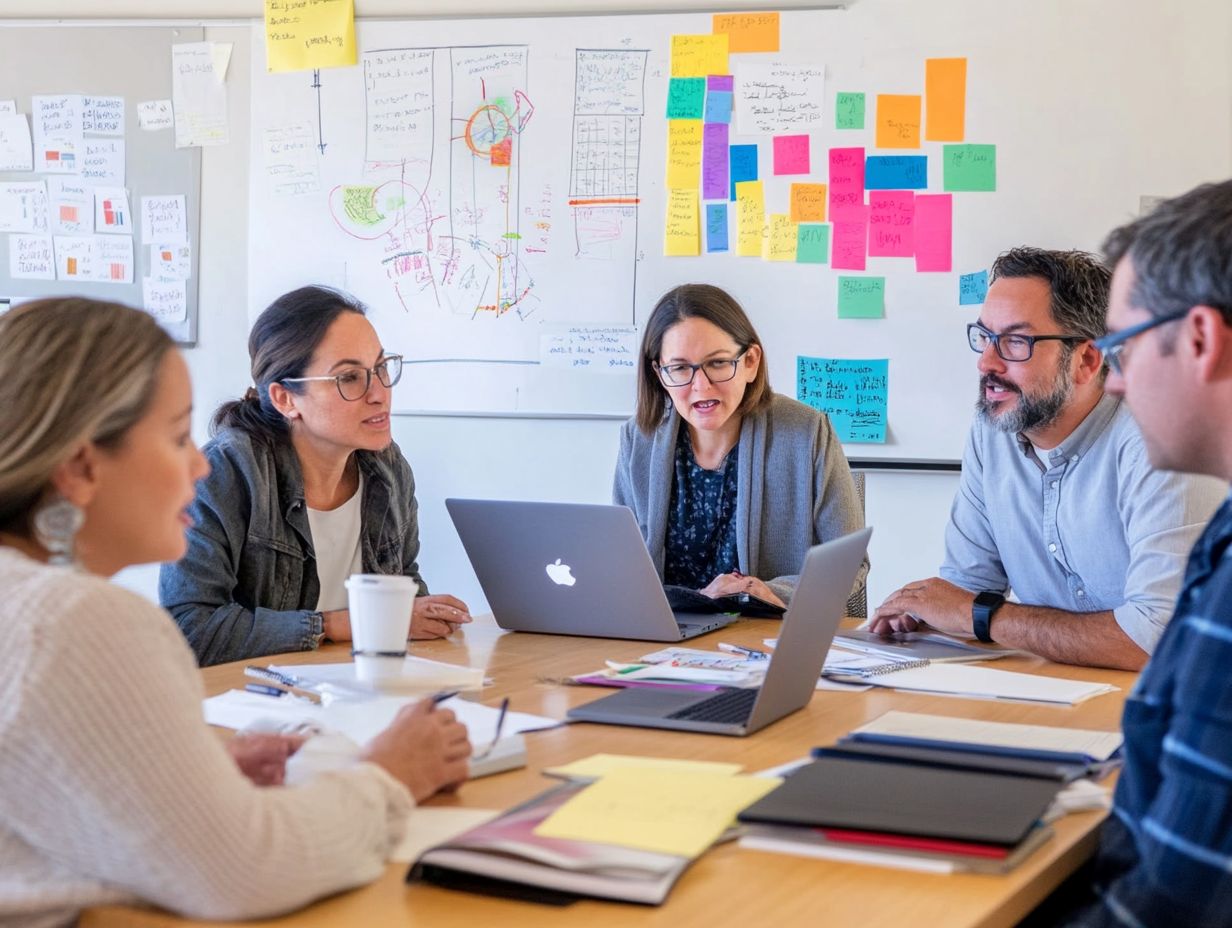
Los 10 factores cruciales en el dise o efectivo de un curso de idiomas son:
- Establecer objetivos de aprendizaje claros y medibles,
- Entender al p blico objetivo,
- Seleccionar materiales y recursos apropiados,
- Incorporar una variedad de actividades y tareas,
- Proporcionar amplias oportunidades para la pr ctica y retroalimentaci n,
- Utilizar tecnolog a y multimedia,
- Promover la conciencia cultural,
- Incorporar contenido real y relevante,
- Evaluar y valorar el progreso regularmente,
- Ser flexible y adaptable en el dise o del curso.
2. Qu tan importante es establecer objetivos de aprendizaje claros y medibles en el dise o de un curso de idiomas?
Setting clear learning goals is crucial! It helps both the instructor and students understand expectations and what they should achieve by the end of the course. This creates a clear and straightforward curriculum.
3. Por qu es importante entender al p blico objetivo en el dise o de un curso de idiomas?
Understanding the target audience is key. It enables the instructor to adapt the content and activities based on the needs, interests, and skills of the students. This creates a more engaging and effective learning experience.
4. C mo puede incorporar una variedad de actividades y tareas mejorar la efectividad de un curso de idiomas?
Incorporating a variety of activities, such as group work, role-playing, and simulations, keeps students engaged and motivated. It also caters to different learning styles, resulting in a more comprehensive learning experience.
5. Por qu es importante evaluar y valorar el progreso regularmente en un curso de idiomas?
Regular assessments are essential for tracking student progress. They provide valuable feedback for both learners and instructors. This helps identify areas for improvement and make necessary adjustments for better effectiveness.
6. C mo contribuye ser flexible y adaptable en el dise o del curso a su efectividad?
Being flexible and adaptable means being open to changes based on student needs and progress. This ensures that the course remains relevant and effective, allowing for a more personalized learning experience.
